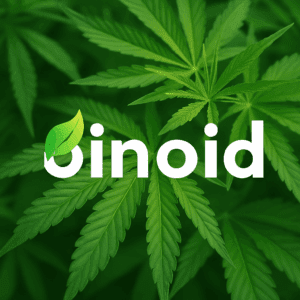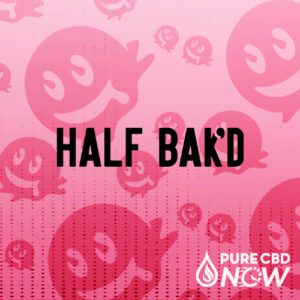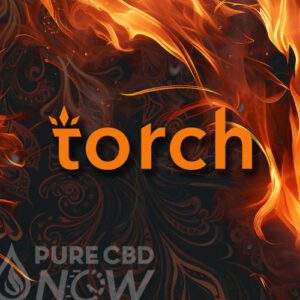Is Kratom An Opioid Agonist Or Antagonist?
Discover amazing products designed just for you.
Featured Products
No products found for the provided IDs.
Is Kratom An Opioid Agonist Or Antagonist? Understanding The Science
Kratom’s interaction with opioid receptors is complex. It exhibits a mixed profile, acting as both a partial agonist and, at higher doses, potentially having some antagonist effects. Here’s a breakdown:
Understanding Agonists And Antagonists:
- Agonist: A substance that binds and activates a receptor, producing a biological response. Think of it like a key fitting into a lock and turning it. Opioid agonists (like morphine) activate opioid receptors, potentially helping to ease pain and encourage euphoria and other effects.
- Antagonist: A substance that binds to a receptor but blocks it, preventing agonists from binding and producing their effect. Think of it as a key that fits into the lock but can’t turn it, and it blocks other keys from entering. Naloxone, used to reverse opioid overdoses, is an opioid antagonist.
Kratom’s Complex Interaction:
Kratom’s primary active compounds, mitragynine and 7-hydroxymitragynine, interact with opioid receptors but differently than typical opioids:
- Partial Agonist Activity: Mitragynine, the most abundant alkaloid in kratom, primarily acts as a partial agonist at the mu-opioid receptor1 (the same receptor targeted by heroin and morphine). It can activate the receptor but not as strongly as a full agonist. This partial agonism is thought to be responsible for kratom’s ability to help ease pain while contributing to why it has a lower risk of respiratory depression compared to full agonists. 7-hydroxymitragynine is more potent and has a higher affinity for the mu-opioid receptor.
- Other Receptor Interactions: Kratom also interacts with other receptors, including Kappa-opioid receptor interactions, whichmay contribute to some of kratom’s less-understood effects. Adrenergic receptor interactions may explain some of kratom’s stimulant-like effects, especially at lower doses.
- Potential Antagonist Effects At High Doses (Speculative): There’s some in vitro (test tube) evidence suggesting that at very high concentrations, some kratom alkaloids might exhibit some antagonist activity at opioid receptors.2 However, this isn’t well-established in humans and is not the primary mechanism of action. More research is needed to understand this aspect. It’s crucial to note that self-treating with high doses of kratom, hoping for antagonist effects, is dangerous and not recommended.
Kratom And Opioid Receptors: Agonist, Antagonist, Or Both?
Kratom interacts with opioid receptors as both an agonist and an antagonist, depending on dosage and receptor type.
- Agonist At Mu-Opioid Receptors: Kratom’s active compounds, mitragynine and 7-hydroxymitragynine (7-OHMG), bind to mu-opioid receptors, producing opioid-like effects such as helping to ease pain and potentially bring mild euphoria.3 However, kratom is a partial agonist, meaning it does not fully activate these receptors like traditional opioids, reducing the risk of respiratory depression.
- Antagonist At Delta- And Kappa-Opioid Receptors: Kratom blocks or reduces activity at these receptors, which may contribute to its ability to lessen opioid withdrawal symptoms.4
- Ceiling Effect: Unlike full opioid agonists, kratom’s effects plateau at higher doses, reducing overdose risks.
Kratom’s Effects: Exploring The Agonist And Potential Antagonist Activity
Kratom’s interaction with the body’s receptors is complex, with both agonist and potential antagonist activity, depending on the dose and specific receptor type. The plant’s active compounds, mitragynine, and 7-hydroxymitragynine (7-OHMG), primarily target the opioid receptors but also influence other neurotransmitter systems.
Agonist Activity: How Kratom Mimics Opioids
- Mu-Opioid Receptor (MOR) – Partial Agonist: Kratom activates the mu-opioid receptor, which is responsible for helping ease pain while potentially bringing euphoria or relaxation. Unlike full opioid agonists (e.g., morphine), kratom has a ceiling effect, reducing the risk of respiratory depression.
- Delta-Opioid Receptor (DOR) – Weak Agonist or Antagonist: Some evidence suggests kratom may partially stimulate delta receptors, contributing to its mood-lifting effects. However, it might also act as an antagonist, limiting the overall dependence potential.
- Adrenergic And Serotonergic Effects: At low doses, kratom interacts with adrenergic receptors, increasing energy and alertness. It also influences serotonin and dopamine pathways, potentially improving mood and focus.
Potential Antagonist Activity: Blocking Certain Effects
- Kappa-Opioid Receptor (KOR) – Antagonist: Kratom blocks kappa-opioid receptors, which are linked to dysphoria and sedation. This antagonism may explain why kratom produces less sedation and mental fog than traditional opioids.
- NMDA Receptor Interaction: Some research suggests kratom may affect NMDA receptors, which play a role in pain perception and neuroplasticity. This could contribute to reduced tolerance buildup compared to conventional opioids.
Balancing Effects: The Role Of Dosage
- Low doses (1-5g): Stimulating, increased alertness, mild euphoria.
- Moderate doses (5-10g): Easing pain, relaxation, mood enhancement.
- High doses (10g+): Sedation, but with limited respiratory depression compared to traditional opioids.
Is Kratom Safe? Understanding Side Effects
Kratom uniquely interacts with opioid receptors, acting primarily as a partial opioid agonist while also displaying some antagonist-like properties at higher doses. This dual nature affects both its benefits and side effects, making it essential to understand how kratom influences the body and the potential risks associated with its use.
How Kratom’s Agonist Activity Contributes To Side Effects
Kratom binds to mu-opioid receptors, much like traditional opioids, but with less respiratory depression and addiction potential. However, this agonist activity can still lead to common opioid-like side effects, including:
- Nausea And Vomiting: A direct result of opioid receptor stimulation, especially in new users or when taken in high doses.
- Dizziness And Drowsiness: Kratom’s sedative effects at high doses can impair cognitive and motor functions.
- Constipation: Similar to opioids, kratom slows digestion, leading to potential gastrointestinal discomfort.
- Dependence And Withdrawal: Chronic use can result in physical dependence, with withdrawal symptoms like irritability, sweating, muscle aches, and insomnia.
How Kratom’s Antagonist-Like Effects Influence Side Effects
At higher doses, kratom interacts with delta and kappa opioid receptors, which may contribute to stimulant effects, mood changes, and reduced opioid-like sedation. Some users report:
- Increased Anxiety Or Irritability: Unlike full opioid agonists, kratom’s partial antagonist properties can lead to mood swings and restlessness in certain individuals.
- Rapid Heart Rate And Elevated Blood Pressure: Kratom’s stimulant effects can increase cardiovascular strain, especially for users with pre-existing conditions.
Long-Term Safety Considerations
- Neurological Effects: While kratom is not as addictive as traditional opioids, long-term use can lead to mental fog, dependence, and withdrawal symptoms.
Kratom For Easing Pain: Agonist Activity And Potential Benefits
Kratom is widely used to potentially help ease pain, largely due to its opioid agonist activity at mu-opioid receptors — the same receptors targeted by traditional painkillers. However, its unique properties set it apart, offering potential benefits without the full risks of conventional opioids.
How Kratom’s Agonist Activity May Help Support Easing Pain
- Mu-Opioid Receptor Activation: Kratom’s alkaloids, mitragynine and 7-hydroxymitragynine, bind to these receptors, reducing pain perception.
- Partial Agonist Properties: Unlike full opioid agonists (such as morphine), kratom may help ease pain.
- Anti-Inflammatory Effects: Some studies suggest kratom may reduce inflammation, making it beneficial for conditions like arthritis or muscle pain.5
Potential Benefits Of Kratom For Pain Management
- Easing Chronic Pain: Many users report kratom helps with fibromyalgia, back pain, and joint pain.
- Alternative To Opioids: Some individuals use kratom to reduce or replace opioid medications, though caution is needed due to dependence risks.
- Mood And Well-Being Support: Interacting with opioid and serotonin receptors is how kratom may help enhance mood, which can be beneficial for those managing pain-related stress.
The Benefits And Risks Of Kratom As An Opioid Agonist Or Antagonist: What’s Best For You?
When considering Kratom’s role as an opioid agonist or antagonist, it’s essential to weigh both the benefits and risks to determine its suitability for personal use. Understanding its dual action can help shape informed decisions about incorporating Kratom into your wellness routine.
Benefits
- Pain Management: As an opioid agonist, Kratom can activate specific receptors in the brain, providing comfort similar to that of traditional opioids. This property makes it appealing to individuals seeking alternative solutions for chronic pain without resorting to prescription medication.
- Mood Enhancement: Kratom’s potential to influence mood positively can offer substantial benefits for those dealing with anxiety or depression. The euphoric effects tied to its agonistic behavior may provide a sense of well-being and increased energy.
- Addiction Treatment: Some users have turned to Kratom as a substitute for traditional opioids, leveraging its milder effects to manage withdrawal symptoms and cravings.4 This aspect makes it a potential aid in combating opioid dependence.
Risks
- Dependence And Tolerance: Regular use of Kratom, especially in high doses, can lead to tolerance and dependence. Users may find themselves requiring more to achieve the same effects, paralleling some risks associated with opioid use.
- Regulation And Quality Concerns: Unlike CBD products from companies like Pure CBD Now, where stringent quality control practices exist, the Kratom market lacks uniform regulation. This discrepancy can result in product purity and potency variance, posing potential health risks.
- Side Effects: As with any substance that affects the central nervous system, Kratom use can lead to unwanted side effects such as nausea, dizziness, or constipation. Understanding these risks is critical for those considering its use.
Read Also:
- Is Kratom Safe? Benefits And Risks Explained
- How To Use Kratom Safely: Dos And Don’ts
- Kratom Full Product Review: Quality And Effectiveness
Sources:
- Broyan, V. R., Brar, J. K., Allgaier, Student, T., & Allgaier, J. T. (2022). Long-term buprenorphine treatment for kratom use disorder: A case series. Substance Abuse, 43(1), 763–766. https://doi.org/10.1080/08897077.2021.2010250
- Hanapi, N. A., Chear, N. J.-Y., Azizi, J., & Yusof, S. R. (2021). Kratom Alkaloids: Interactions With Enzymes, Receptors, and Cellular Barriers. Frontiers in Pharmacology, 12. https://doi.org/10.3389/fphar.2021.751656
- Annuar, Ummi Kalthum Azlan, Mediani, A., Tong, X., Han, R., Ebtesam Al-Olayan, Syarul Nataqain Baharum, Hamidun Bunawan, Murni Nazira Sarian, Hamizah Shahirah Hamezah, & Ibrahim Jantan. (2024). An insight review on the neuropharmacological effects, mechanisms of action, pharmacokinetics and toxicity of mitragynine. Biomedicine & Pharmacotherapy, 171, 116134–116134. https://doi.org/10.1016/j.biopha.2024.116134
- Prevete, E., Hupli, A., Marrinan, S., Singh, D., Udine, B. D., Bersani, G., Kuypers, K. P. C., Ramaekers, J. G., & Corazza, O. (2021). Exploring the use of Kratom (Mitragyna speciosa) via the YouTube data tool: A novel netnographic analysis. Emerging Trends in Drugs, Addictions, and Health, 1, 100007. https://doi.org/10.1016/j.etdah.2021.100007
- Kruegel, A. C., Uprety, R., Grinnell, S. G., Langreck, C., Pekarskaya, E. A., Le Rouzic, V., Ansonoff, M., Gassaway, M. M., Pintar, J. E., Pasternak, G. W., Javitch, J. A., Majumdar, S., & Sames, D. (2019). 7-Hydroxymitragynine Is an Active Metabolite of Mitragynine and a Key Mediator of Its Analgesic Effects. ACS Central Science, 5(6), 992–1001. https://doi.org/10.1021/acscentsci.9b00141
Frequently Asked Questions About Is Kratom An Opioid Agonist Or Antagonist?
How does kratom work in the body?
Kratom contains active compounds, primarily mitragynine, and 7-hydroxymitragynine, which interact with the body’s opioid receptors. These interactions can produce effects similar to both stimulants and opioids, affecting mood and pain perception. The specific effects depend on the dosage, strain, and individual physiology.
How is kratom commonly consumed?
Kratom can be consumed in several forms, including capsules, powders, and extracts. The leaves may be chewed or brewed into a tea, while powders can be mixed with liquids. Capsules provide a convenient, measured dose. The method of consumption can influence the onset and duration of effects experienced by the user.
Can kratom cause dependence or addiction?
Yes, kratom can cause dependence or addiction, particularly with prolonged use. The plant’s interaction with opioid receptors can lead to tolerance and withdrawal symptoms similar to those associated with opioids. Users need to monitor their intake and be aware of the potential for dependence.
What are the side effects of kratom?
Common side effects of kratom use include nausea, constipation, dizziness, and drowsiness. In higher doses, it can cause more severe side effects such as confusion, hallucinations, and, in rare cases, seizures.
Is kratom safe to use for pain management?
The safety of kratom for pain management is debated. While some individuals report an easing out of chronic pain, others experience significant side effects or develop dependence. It’s crucial to consult a healthcare professional before using kratom for pain management, especially for those with underlying health conditions or those taking other medications.
How does kratom compare to traditional opioids?
Kratom and traditional opioids both interact with opioid receptors; however, they differ significantly in their chemical makeup and side effect profiles. Kratom’s effects can vary widely based on dosage, potentially offering milder, stimulant-like effects at lower doses, while opioids typically act as stronger agents on pain.



































